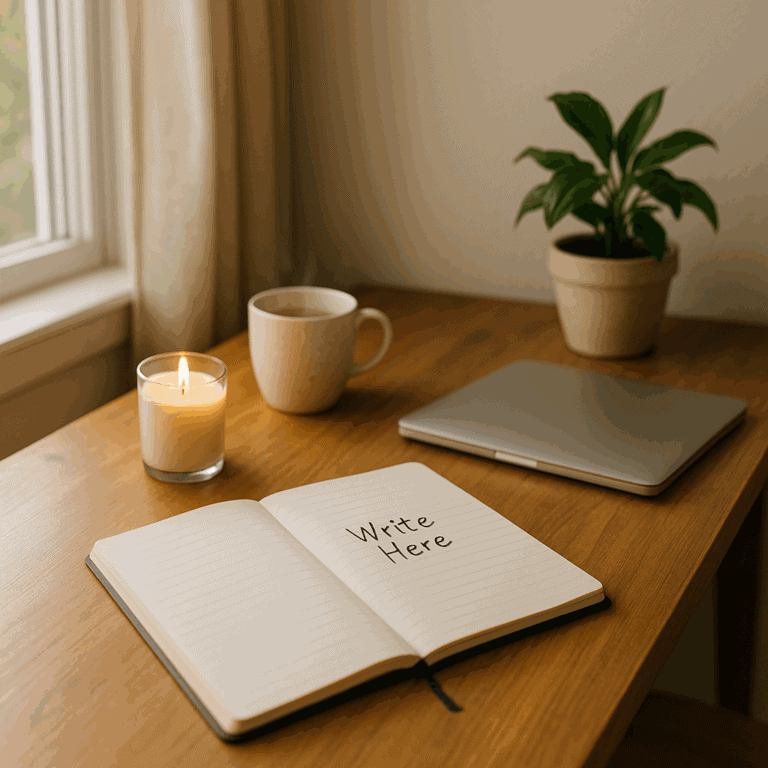Beat Writing Resistance and Write Anyway—5 Best Hacks
“You can’t wait for inspiration. You have to go after it with a club.”— Jack London
Some days, writing feels like a river, smooth, fast, and inevitable. Other days, it’s a wall. You open your laptop or pick up your pen, and something inside you whispers, Not today.
That’s writing resistance. And if you’re a new indie author, you’ve likely met it in more forms than one: fatigue, fear, perfectionism, distraction, or a simple case of “I just don’t want to.” Remember, writing resistance is a regular part of the journey. But learning how to work through it, instead of waiting for it to pass, is what separates aspiring writers from published ones.
This writer’s guide offers a psychological lens into writing resistance and concrete strategies to help you push past it, even when you’d rather do anything else. Discover writing motivation, ways to beat writer’s block, and increase writing consistency.
Why Writing Resistance Shows Up
Writing resistance isn’t laziness. It’s usually a protective response. Your brain is trying to shield you from discomfort. Whether that’s fear of failure, fear of judgment, or fear that you won’t meet your own expectations.
The challenge is that your brain is wired for short-term comfort, not long-term creativity. Writing often asks you to face uncertainty, risk vulnerability, and do something that may not yield immediate rewards. That’s why, paradoxically, the more writing matters to you, the stronger the writing resistance can be.
5 Strategies to Beat Writing Resistance
1. Lower the Bar (Without Lowering Your Standards)
Don’t aim to write a whole chapter. Instead, aim to open the document. Often, the hardest part is starting.
Instead of waiting to feel motivated, build a mini-habit: “I write one sentence. If I stop, I still win.” A mini-habit is a small, manageable action that you commit to doing consistently. This shift removes pressure, opens the door, and often leads to more writing than you expected.
2. Start with Curiosity, Not Perfection
Perfectionism is a sneaky form of procrastination. The antidote is curiosity. Embrace the power of curiosity over perfectionism. Ask: What would happen if I just explored this idea for 10 minutes?
Ask: What would happen if I just explored this idea for 10 minutes?
When writing becomes discovery instead of performance, your brain feels less threatened and more willing to play.
3. Set a Timer and Keep It Short
Try a “just 10 minutes” sprint. Writing resistance often fades once momentum begins to build.
Bonus tip: Pair it with a sensory cue to condition your brain for focused effort. For instance, you can light a scented candle, play instrumental music, or prepare a cup of your favorite tea before starting your writing session.
4. Write About Why You Can’t Write
This may sound counterintuitive, but it works. Open a blank page and write, “I don’t feel like writing today because…” Keep going until you hit a breakthrough or find your groove.
Sometimes, the resistance is the material.
5. Make Accountability Gentle but Present
Tell a writer friend, “I’m going to write for 15 minutes today. I’ll text you when I’m done.” This light external pressure, in the form of a commitment to a friend, can shift your internal dialogue from “Do I feel like writing?” to “I said I would.” It’s not about forcing yourself to write but about creating a supportive environment that encourages you to keep your writing commitments.
Real-Life Pitfall: Waiting for Motivation
One of the most common traps writers fall into is thinking, “‘I need to wait until I feel ready.” But motivation doesn’t come first. Action does. When you write, motivation often follows. When you wait, it rarely shows up on its own.
The truth? You can write before you feel like it. And doing so builds the creative discipline your future self will thank you for.
“Resistance will tell you anything to keep you from doing your work. It will perjure, fabricate; it will seduce you. Resistance is always lying and always full of—well, you know.”— Steven Pressfield, The War of Art
Wrap-Up: You Don’t Have to Feel Ready to Begin
Writing resistance is a signal, but it doesn’t have to be a stop sign. It’s a chance to work with your brain instead of against it. By lowering the activation barrier, embracing imperfection, and building rituals around effort (not outcome), you train yourself to show up anyway.
You’re not alone in your resistance. But you are stronger than it. And with practice, you’ll write through it.
Remember, you don’t need to feel ready to write. You only need a starting point. Use these five hacks to move through resistance and reconnect with your creative momentum. The power is in your hands to show up and write, even when you don’t feel like it.
Print the Beat Writing Resistance Checklist (below). Browse our Writing Focus & Habits series to keep building consistency even on tough days.
We trust you’ve found this writer’s guide both enlightening and inspirational. They’re designed to equip you with the tools and insights to bolster your success as a burgeoning author.
The path of writing is one filled with ceaseless learning and enhancement. You are not expected to tread this path solo. We’re thrilled to accompany you on this journey, offering support and motivation at every turn. Our objective is to deliver foundational knowledge and pragmatic guidance, enabling you to traverse the literary landscape with amplified confidence.
For more guidance on Focus and Habits, see other guides in this series. We suggest starting with Boosting Mental Focus—5 Hacks for New Indie Authors. You might also like Outcome-Based Management: 7 Steps to Writing Success.
How can we help? To let us know, please fill out our Contact form. Happy writing!
If you have a draft you want to publish with the help of AI, read, Is Your Book Ready to Self-Publish? Lastly, for help writing a non-fiction book, read Write Your First Non-Fiction eBook: a 30-Day Workbook for Getting It Done.
Action Steps
- Try a 10-minute “resistance sprint” today. Start the timer and write
- Journal why you don’t feel like writing, and see what clarity emerges
- Use a low-pressure cue (tea, candle, timer) to begin without overthinking
- Reach out to an accountability partner with a micro-goal
- Reflect: How do you feel after writing (if only a little)?
Beat Writing Resistance—Quick Checklist
Use these proven strategies to start writing even when you don’t feel like it. They are crafted to be a motivational and practical tool for new indie authors who struggle with starting or sticking with writing sessions.
Reframe the Resistance
☐ Remind yourself writing resistance is normal. It doesn’t mean you’re failing
☐ Shift from “I have to write” → “I get to explore something today”
☐ Recognize resistance as a protective instinct, not a personal flaw
Lower the Bar to Build Momentum
☐ Set a micro-goal: write one sentence or open your draft
☐ Tell yourself: “If I stop after that, I still win”
☐ Celebrate small starts to build consistency over time
Use Short Timed Sprints
☐ Set a 10–15 minute timer
☐ Begin even if you don’t feel “in the mood”
☐ Don’t reread or edit. Instead, move forward
Write Through the Block
☐ Freewrite about why you don’t feel like writing
☐ Use this sentence: “I’m resisting writing because…”
☐ Let the act of writing shift your state
Add Gentle Accountability
☐ Tell someone your goal for the day, even if it’s small
☐ Text a writer friend when you start and finish
☐ Join a community where you can check in weekly
Start before you’re ready. Write even when it’s messy. Resistance shrinks when you move toward it.
“Action isn’t just the effect of motivation—it’s also the cause of it.” — Mark Manson
#



